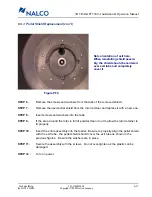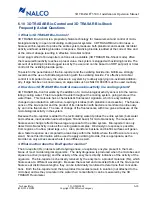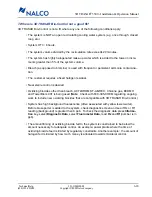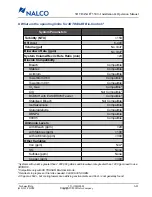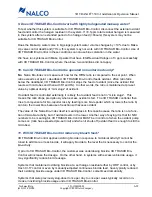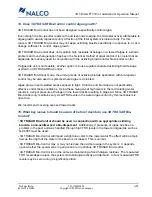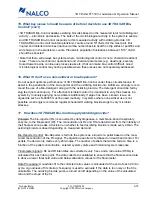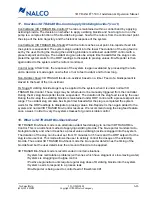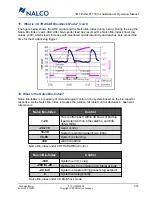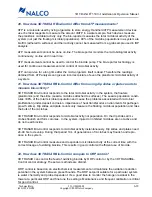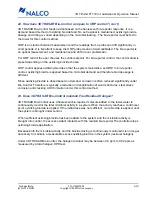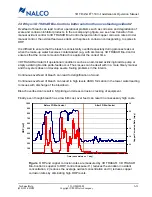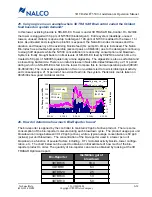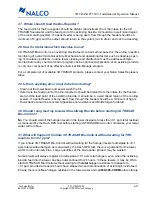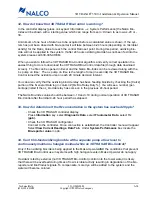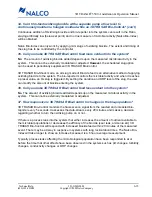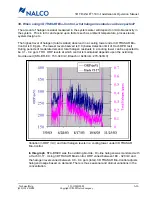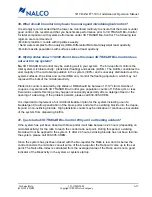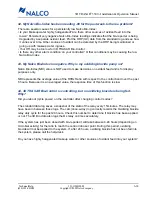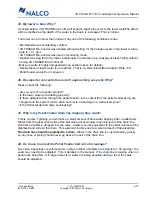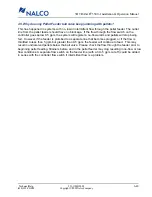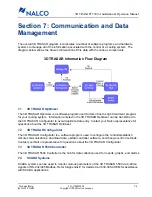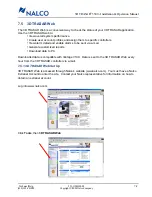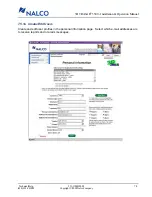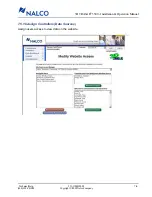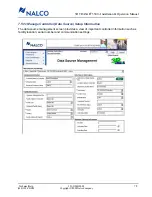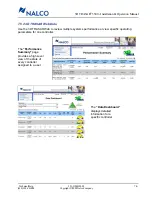
521-OM0108.88
Copyright
2009 Nalco Company
6-31
Technical Help
(630) 305-CHEM
3D TRASAR
5500 - Installation & Operation Manual
24. Why is 3D TRASAR Bio-Control a better solution than over-feeding oxidants?
Overfeed of bleach can lead to other operational problems such as corrosion and degradation of
scale and corrosion inhibitor products. In the accompanying figure, we see how transition from
manual oxidant control to 3D TRASAR Bio-Control helped control copper corrosion rates. Under
manual control, the oxidant feed was erratic, with spikes in corrosion corresponding to spikes in
ORP.
It is difficult to ensure that the bleach is consistently overfed especially during process leaks or
when the make-up water becomes contaminated (e.g. with ammonia). 3D TRASAR Bio-Control
ensures that the correct amount of bleach is applied at the correct time.
3D TRASAR will alarm if operational conditions such as an air-locked oxidizing biocide pump or
empty oxidizing biocide porta-feeds occur. Thus issues can be dealt with in a more timely manner
and the system does not develop severe fouling problems in the interim.
Continuous overfeed of bleach can lead to delignification of wood.
Continuous overfeed of bleach can result in high levels of AOX formation in the tower water leading
to issues with discharge of the blowdown.
Bleach overfeed can result in SS pitting and stress corrosion cracking of equipment.
Finally, even though bleach has a low $/lb cost, over feed can result in unnecessary high costs.
-
100
200
300
400
500
600
700
800
900
1,000
Time (each division = 1 day)
ORP (mV)
-
0.5
1.0
1.5
2.0
2.5
3.0
Copper Corrosion Rate (mpy)
Before 3D Bio-Control
After 3D Bio-Control
Figure
: ORP and copper corrosion rates are measured by 3D TRASAR. 3D TRASAR
Bio-Control is superior to ORP control because it 1) reduces the variation in oxidant
concentration, 2) reduces the average oxidant concentration and 3) reduces copper
corrosion rates by eliminating high ORP levels.

